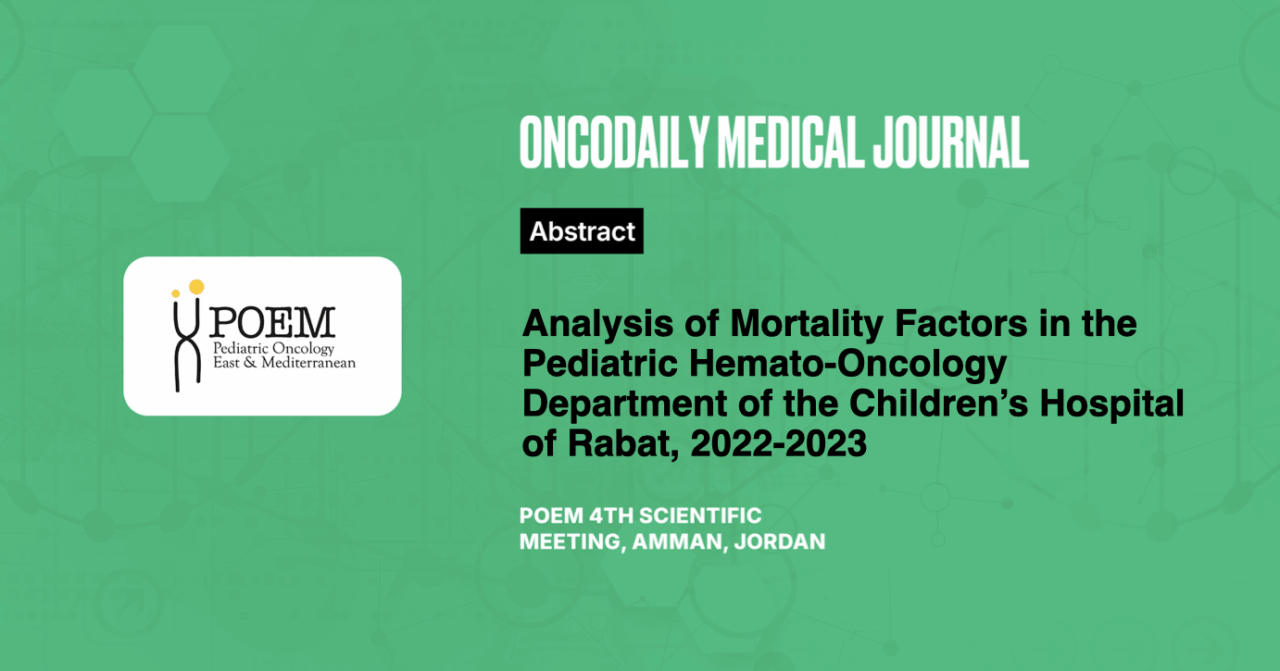Analysis of Mortality Factors in the Pediatric Hemato-Oncology Department of the Children’s Hospital of Rabat, 2022-2023
Abstract
Introduction: Morocco was selected as a pilot site for the WHO launched the Global Initiative for Childhood Cancer GICC and a childhood cancer control strategy was set up to reduce mortality and the 2030 survival target was set at 80%. This study analyzes the mortality causes for children treated at the Pediatric Hemato-Oncology Center in Rabat.
Methodology: We included all cancer patients admitted for cancer and who died over the period from January 1st, 2022, to December 31, 2023. A descriptive analysis was performed on the causes and circumstances of death, the epidemiological and clinical characteristics of the patients.
Results: A total of 51 deaths were recorded during the period. The primary cause of death was tumor progression (61%), followed by treatment-related toxicity (31%). 45% of deaths occurred over the weekend, on public holidays, and on Mondays. October accounted for 18% of deaths. Urban patients appeared to have a higher mortality rate than rural patients. The majority of deaths (29%) occurred within the first month following diagnosis.
A total of 51 deaths were recorded out of a population of 429 patients. The main cause of death was tumor progression (61%), followed by treatment-related toxicity (31%). The most commonly reported cancer was leukemia, followed by lymphomas (20%) and neuroblastomas (18%). The sex ratio favored males, with a ratio of 1.22. The median survival time after diagnosis was less than one year for 76% of the patients.
Conclusion: The study highlighted that deaths were mainly associated with tumor progression followed by treatment-related toxicity (31%). These results suggest that the causes are likely linked to patients presenting at advanced disease stages, underscoring the importance of early diagnosis. This study serves as a crucial starting point for improving clinical practices, enhancing patient stratification, and better managing treatment toxicity to achieve the country’s 2030 objective.





